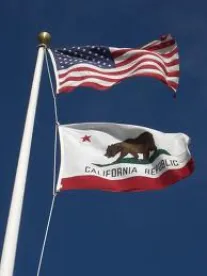Rocky Mountain Farmers v. Corey was recently analyzed by Jane Montgomery and David Loring at a U.S. Supreme Court energy and environmental case update hosted by the Energy Council, Illinois Chamber of Commerce. What follows is a written transcript of the Rocky Mountain Farmers v. Corey , 730 F.3D 1070 (9TH CIR. 2013) analysis presented April 28, 2014.
In 2009, California adopted a “low-carbon fuel standard” to reduce the state’s greenhouse gas (“GHG”) emissions. The standard essentially established an annual declining cap on the average carbon intensity of transportation fuel sold in California. Thus, to comply with the cap, fuel producers who wish to sell fuel in California are required to either meet a specific carbon intensity or purchase credits to offset the higher carbon content of their fuel. California’s fuel standard calculates the carbon intensity of a particular fuel based on its so-called life-cycle carbon content – that is, not only the carbon content of the fuel, but also the carbon cost for producing the fuel and transporting that fuel to California.
A number of out-of-state ethanol producers and oil companies filed suit arguing essentially that California’s fuel standard unfairly assigns a higher carbon intensity to out-of-state fuels and, as such, unconstitutionally discriminates against out-of-state fuel producers. The 9thCircuit Court of Appeals reviewed California’s fuel standard to determine whether it was facially unconstitutional.
Without falling down the rabbit hole that is constitutional law, in a nutshell the constitutional challenge is based on something called the “dormant Commerce Clause.” Under Article I of the Constitution, only Congress has the power to regulate commerce among the states. Thus, the dormant Commerce Clause essentially says that one state cannot pass a law that improperly burdens or discriminates against interstate commerce. This doesn’t prevent states from passing laws that affect in-state and out-of-state interests unequally – indeed many such laws exist today.
In California’s case, this equated to a question of whether California’s fuel standard’s assignment of different carbon intensities to ethanol (and other fuels) produced in different regions has a reasonable basis apart simply from the fuel’s origin. The 9th Circuit found that it did but of course the trial court had not. Interestingly, the model used by California to calculate life cycle emissions was developed at Argonne and has been in use for other purposes for nearly two decades. The method was chosen because it seemed to ignore jurisdictional differences to the extent possible. California’s fuel standard treats fuel based on the fuel’s method of production and other factors like transportation costs. Thus, a fact the court relied upon was that ethanol produced in California may actually be more carbon intensive than ethanol produced in the Midwest because the fuel source – corn – is grown in the Midwest, right where Midwestern ethanol is produced. Similarly, ethanol produced in Brazil, despite the cost to transport to California, is derived from lower-carbon sugar cane and produced with non-carbon hydropower, and, thus, may have a lower overall carbon impact than California-produced ethanol. Essentially, the 9th Circuit’s point was that California’s fuel standard isn’t based on the location of the fuel, even though the location may dictate the fuel’s overall carbon intensity and thus, the cost to sell that fuel in California.
The ethanol producers and oil companies filed a petition last month for review by the Supreme Court. So we will need to wait and see whether the Supreme Court agrees to hear the case. The Supreme Court may defer hearing the case until the lower district court has an opportunity to more closely reexamine California’s fuel standard. In the interim, the decision is clearly significant in terms of paving the way for other states to adopt similar fuel standards. To date, Washington, Oregon, Maryland, Massachusetts, New York and Rhode Island are all considering similar legislation. States are in a race to come up with solutions to reduce GHG emissions. What remains to be seen is whether Congress or the Supreme Court will limit the ability of individual states to reduce their respective GHG emissions at the cost of out-of-state industry.
As a side note, last week, a district court in Minnesota in State of North Dakota v. Beverly, 11-cv-03232 (D. Minn., April 18, 2014) invalidated a Minnesota statute under the dormant commerce clause. The state had enacted a statute saying that all power used in the state had to be from low emitting sources. The court held that the unique way that electricity passes through wires made it impossible to know the source of any electron, and therefore made the certifications required by sellers impossible. The court further held that the case had a chilling affect on commerce with businesses in other states and this violated the US Constitution.
These cases are both significant as we get closer and closer to New Source Performance Standards from power plants. Indeed, it remains to be seen how states going to be able to address remarkably different legal structures and requirements for energy contracts and at the same time respond to lowering GHGs from power plants.
Click below for the transcripts of Montgomery and Loring's presentation on:
Mingo Logan Coal Co. v. EPA Analysis of the Expansion of the EPA’s Authority
In re: La Paloma Energy Center, LLC Analysis of Permit Appeal




 />i
/>i

